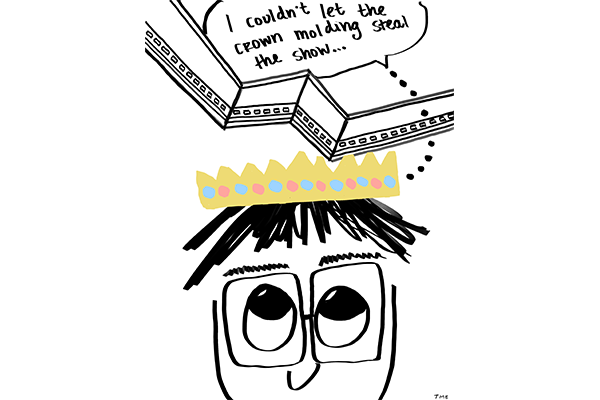How Moldings Enhance Your Home
History of Moldings
The original purpose of moldings dates from prehistoric times when moldings were used as structural elements to bind together or connect surfaces. The Ancient Greeks took moldings to a higher level by visually dividing spaces using crown molding designs based upon geometric shapes of an ellipse, hyperbola, and parabola. The Romans based their molding designs on circles and today we still use their quarter-round and half-round moldings. During the Italian Renaissance of the 1400’s, Greek and Roman molding designs were revived and illustrated in pattern books to provide exact dimensions of these features for builders to use in construction.
Types of Molding
Moldings are used to enhance the intersections of floors, walls and ceilings. Baseboards along floors, wainscot along walls, window and door frames on walls and cornices at ceilings incorporate the elegant profiles and ornamental details of a molding’s surface that is designed with recesses and reliefs, with the primary importance of the type of shadow it will cast.

King George III gave his name to the Georgian style of architecture that featured elaborate moldings. The living room in the Thornton Estate in Kent County, Maryland, includes many types of moldings. There are layers of elaborate crown molding, egg and dart, and dentil profiles that incorporated the window headers. The space also includes chair rail and baseboard, as well as the Chippendale mantel with a pineapple motif, the symbol of hospitality. An unusual detail is the reeded trim (vertical half round shapes) for the windows that interrupts the chair rail and extends to the top of the baseboard. This detail makes the room seem taller in height. These moldings and ceiling medallions of plaster were crafted by hand, since the invention of large machines for planning wood that led to mass production of moldings did not occur until the second phase of the Industrial Revolution.
Moldings Today
Fast forward to 1969, when molded polyurethane moldings were introduced. Unlike wood, this material resists decay, insect infestation, and water damage and requires little maintenance. Since polyurethane moldings are not a natural material like wood, they cannot be stained. King George III might not approve, but modern house designs have little or no moldings or trim to maintain a minimalist look.
Case Studies

For the Hudson Valley Farmhouse project, Bohl Architects created a minimalist look by minimizing the use of baseboard molding. The kitchen and dining area has no interior molding around the windows and doors. At the windows, the drywall turns the corner of the window jambs to end at the window frame, which accentuates the rhythm of the windows and frames the landscape. When you have large windows such as these, replacing moldings with pops of color can add architectural character to the space.

For an addition to an 1840 Gothic Revival style house, Bohl Architects specified moldings including baseboard, paneling under the windows, crown, layered molding around doors and cased openings and wrapped beams with additional crown molding to intersect the ceiling for a coffered look. The light olive color ties this addition to the original part of the nearly 200-year-old home, which was recently featured in Veranda Magazine.
There are many ways to add ornamentation to your space and moldings are a great option. Whether you prefer traditional moldings or minimal moldings for your new home or renovation, we can collaborate with you to create your individual look!
Trust The Experts At Bohl Architects
Bohl Architects is a nationally recognized architecture and interior design firm specializing in custom residential design and historic preservation projects.
The interior spaces of our homes dramatically capture views of the landscape and develop an effortless connection of inside and outside. We take you on a journey of architectural exploration, leaving you not only with a home that is entirely attuned to your needs and wants, but with a better understanding of how our collaboration with you brought the space to life.
We love what we do, but the final product is only successful if you love what we do. Call us at 410.263.2200 – we’re excited to hear about your unique project.



